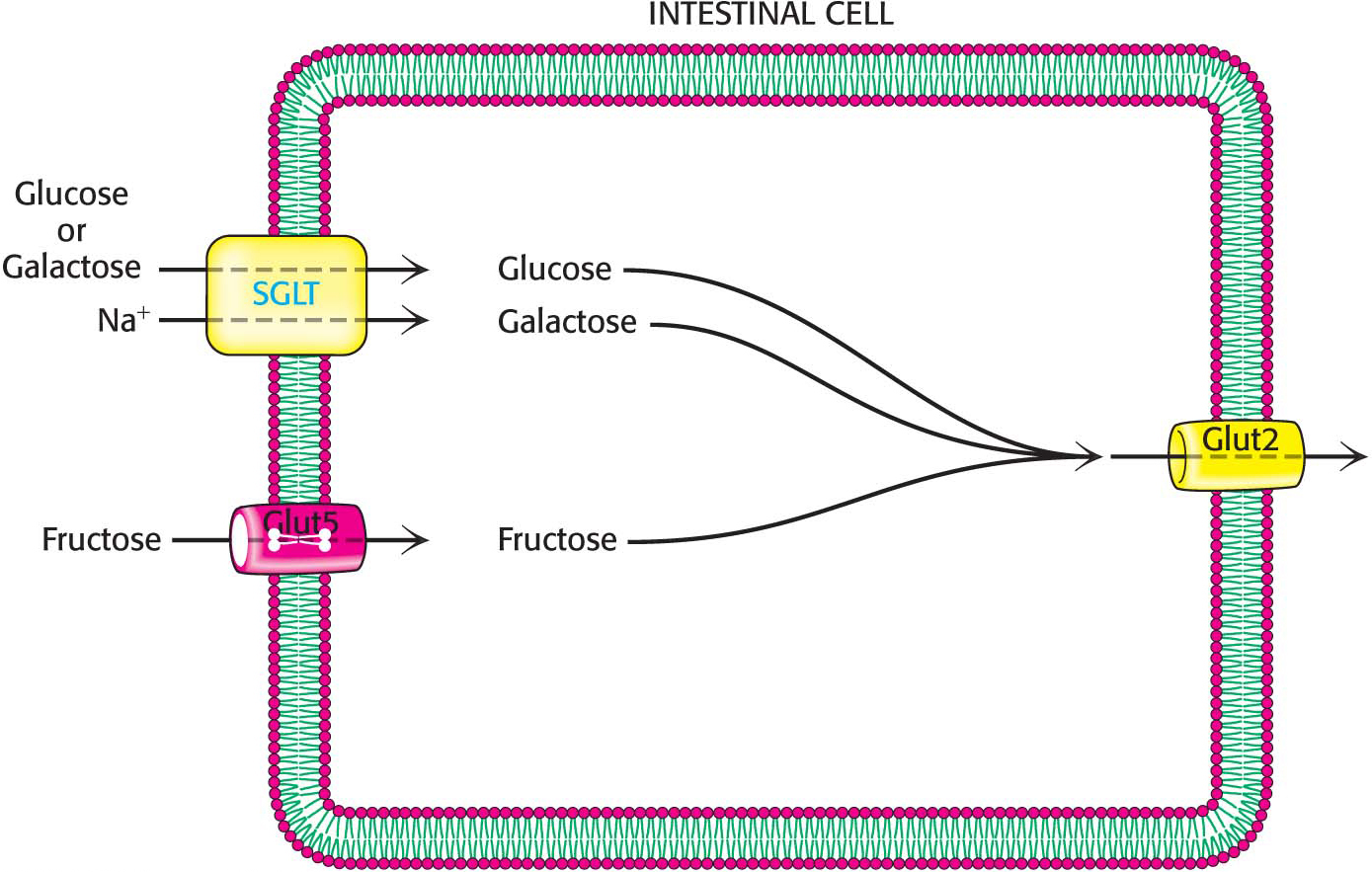
14.3 Dietary Carbohydrates Are Digested by Alpha-Amylase
How are the crust and the vegetables that topped our pizza converted into biochemicals? These ingredients are sources of carbohydrates, both complex, such as starch and any glycogen that might be present in the meat, and simple, such as sucrose.
Like proteins, dietary carbohydrates are digested into molecules that can be readily absorbed by the intestine. The most common end products are the monosaccharides glucose, fructose, and galactose. Our primary source of carbohydrates is the complex carbohydrate starch, present in the crust. This branched homopolymer of glucose is digested primarily by the pancreatic enzyme α-amylase, which cleaves the α-1,4 bonds of starch but not the α-1,6 bonds (Figure 14.5). The products are the di-

DID YOU KNOW?
Baking pizza in an oven converts the dough into crust and solves a biochemical problem as well: starch is difficult to digest without first being hydrated, and heat allows the starch to absorb water.
The digestion of disaccharides is simpler than the digestion of complex carbohydrates. Sucrose, a disaccharide consisting of glucose and fructose contributed by the vegetables, is digested by sucrase. Lactase degrades the milk-
Glucose and galactose are transported into the intestinal epithelial cells by a secondary active-
